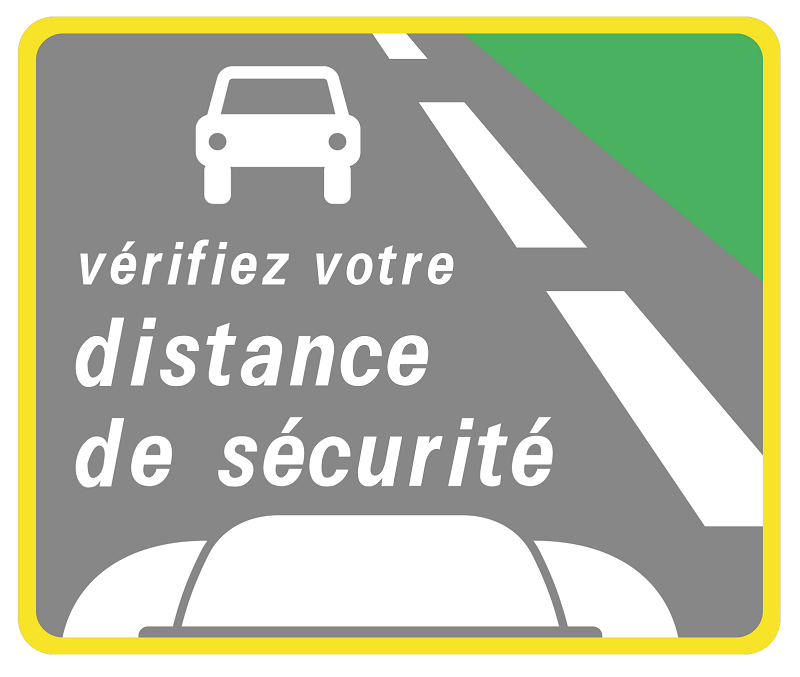Although motorists are relatively familiar with the rules governing speed limits, they are less familiar with the safety distances to be maintained from the vehicle in front. Yet speed and safety distance go hand in hand to avoid an accident! In the event of an unexpected event and sudden braking, the ability of your vehicle to avoid hitting the vehicle in front depends entirely on these two elements.
Here's all you need to know about it to drive safely!
Safety distances to be respected
On the motorway, the regulatory distance to be respected is 73 metres from the vehicle in front of you when you are driving at the maximum speed of 130 km/h.
By way of comparison, when driving at 110 km/h (on an expressway for example), the regulatory distance is 66 metres.
These safety distances are not indicative, they are written into the Highway Code, and failure to respect them can cost you a fine of €135 and three points off your driving licence.
Obviously, these safety distances relate to moving vehicles and correspond to the maximum permitted speeds of each of these types of of lane. No need to leave 73 metres in front of you in the middle of a traffic jam!
Paint stripes on the floor as markers

You may be wondering how you are supposed to know that you are 73 metres from the vehicle in front of you! Don't worry, you don't need to have a compass in your eye. The paint stripes on the ground are your best guide:
- The dashed white line (the most common) has lines 3 metres long at 10 metres intervals.
- The hard shoulder has lines of 39 metres spaced 13 metres apart.
- Deterrent lines (used in areas where overtaking is dangerous) have lines 3 metres long and 1.33 metres apart.
For example, on the motorway, you must keep 2 lines of the hard shoulder of the vehicle in front of you when you are driving at the maximum speed.
How to calculate the safety distance?
These safety distances may seem excessive, but they have been scientifically calculated by taking into account two key elements: the average reaction time of a driver and the braking distance relative to the vehicle speed. These two elements allow us to obtain the stopping distance corresponding to each speed of travel.
For example, if a vehicle is travelling at 130 km/h on the motorway, it is estimated that its reaction distance to an unexpected event will be about 37 metres on average. Once the driver has "reacted", the vehicle will take about 92 metres to come to a complete stop. The average stopping distance will be 129 metres!
As you can see, the legal safety distance is below this calculation! That is why it is better to leave more distance than distance than the 73 metres guideline when driving at maximum speed.
In bad weather, the driver's reaction time may be longer due to reduced visibility and the braking distance in wet conditions. The stopping distance at 130 km/h is calculated to be 193.5 metres in these conditions.
Reducing the risk of accidents: increasing the safety distance
Safety distance is one of the elements of road safety that is still largely neglected by motorists... Many people get behind the wheel thinking that driving within the speed limit is enough to avoid risk-taking, but speed and safety distance go hand in hand in order to brake in time.
Keeping a safe distance is the best protection for you and other drivers!
Special cases
We have already mentioned the case of bad weather, which may increase both the driver's reaction time and braking distance; another factor to consider is the weight of the vehicle.
If you are driving with a loaded vehicle or towing a trailer or caravan, your braking distance is longer. Keep this in mind and be extra vigilant when you are in this situation!
